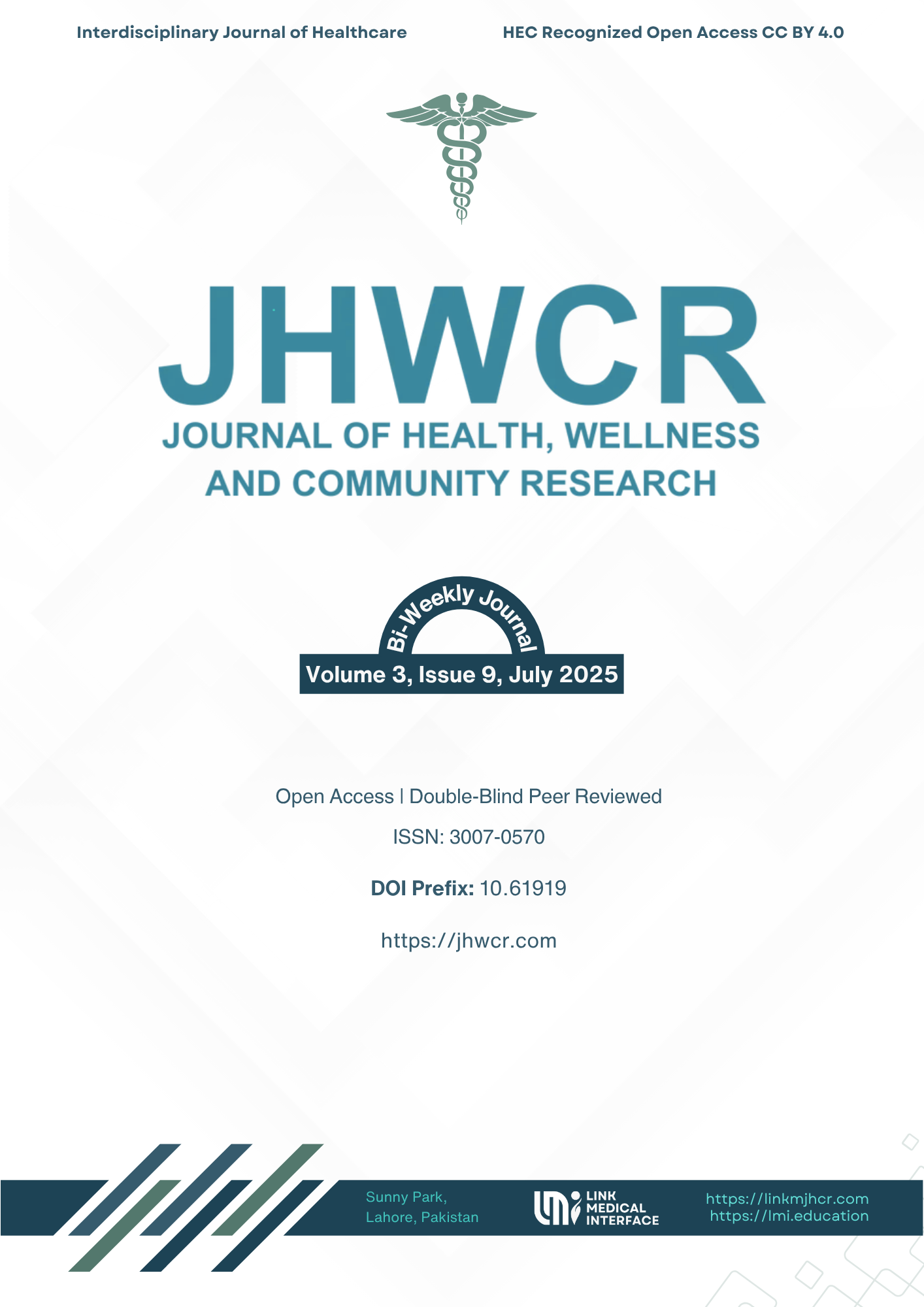Association of Upper Extremity Motor Function with Hypertonia in Chronic-Stroke Patients
DOI:
https://doi.org/10.61919/g1v6qy13Keywords:
Hypertonia, stroke, upper extremity, motor function, Modified Ashworth Scale, Upper Extremity Functional Index, chronic stroke, rehabilitationAbstract
Background: Hypertonia of the upper extremity is a common and disabling consequence of chronic stroke, substantially limiting motor function and daily activity participation. Despite extensive research in early post-stroke phases, the long-term relationship between hypertonia severity and upper limb functional outcomes in chronic stroke survivors remains underexplored in low- and middle-income countries, including Pakistan. Objective: To determine the association between upper extremity motor function and hypertonicity in chronic stroke patients. Methods: In this cross-sectional observational study, 270 stroke survivors (>12 months post-stroke) were recruited from physiotherapy departments and clinics in Lahore, Pakistan. Hypertonia was assessed using the Modified Ashworth Scale (MAS), and upper extremity motor function was measured by the Upper Extremity Functional Index (UEFI). Descriptive statistics, chi-square tests, and Spearman’s correlation were employed to evaluate relationships between MAS grades and UEFI scores, with subgroup analyses for age, gender, and duration since stroke. Results: The majority of participants exhibited moderate to severe hypertonia (MAS grade 3: 54.1%; MAS grade 4: 20.0%). Mean UEFI scores decreased significantly with increasing MAS grade, from 63.2 ± 8.9 (MAS 1) to 39.8 ± 11.9 (MAS 4). A strong negative correlation was observed between MAS and UEFI (Spearman’s ρ = –0.66, p < 0.001), with this association persisting across demographic subgroups. Conclusion: Greater upper extremity hypertonia is strongly associated with poorer functional outcomes in chronic stroke patients. These findings highlight the need for targeted spasticity management and rehabilitation strategies to improve upper limb function in this population.
Downloads
Published
Issue
Section
License
Copyright (c) 2025 Ali Hammad Subhani, Maria Naz, Arooj, Arooj Fatima, Amir Ali, Aqsa Majeed, Ateka Ramzan, Arooj Hussain (Author)

This work is licensed under a Creative Commons Attribution 4.0 International License.


